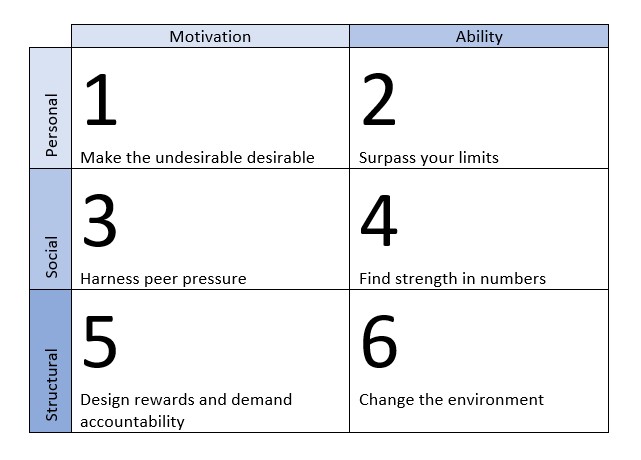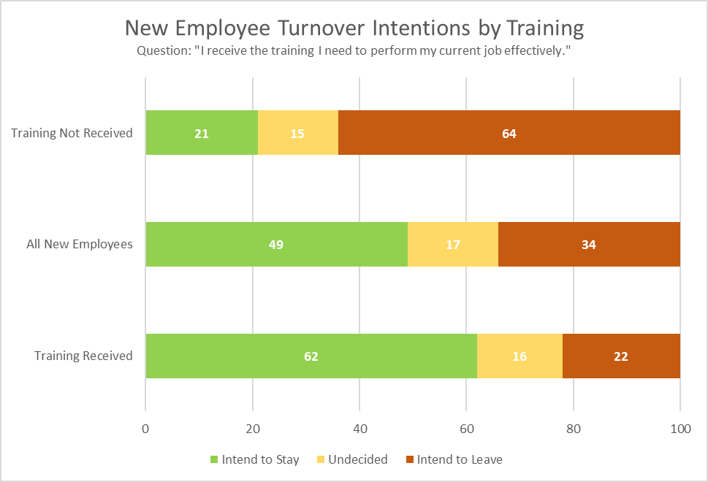Originally posted in Clinical Researcher February 2020 (Volume 34, Issue 2)
When you oversee a clinical research program, a research site, or a health system, you take reputational risks if your research community is not well supported. Failure to provide appropriate access to training resources for each team member may be the product of inexperienced leadership at best, or irresponsible leadership at worst.
The mistake of not providing employees with adequate training, including access to resources and continuing education, can lead to low participant enrollment in clinical trials, protocol violations, and poor audit outcomes. This exposes a research site to reputational risk and possibly losing the trust of both participants and sponsors/contract research organizations (CROs).
Training programs present an opportunity to expand (or reinforce) core knowledge for all employees, but employers may find the investment hard to justify if they have tight budgets. Training often comes at the expense of work time that could be used to complete core responsibilities and projects, creating delays in employee deliverables. Contrary to these perceived drawbacks, training and development provide benefits for both the organization and the individuals that make them a worthwhile investment.
Employers who invest in their human capital via training and certification programs experience 218% greater income per employee than those who do not. They also experience 24% higher net income, which is a compelling argument for continued support for employee development initiatives, even during economic downturns.{1}
Having a framework for creating and evaluating a program to educate, train, and certify research teams helps to ensure its sustainability. Creating such a program often requires change, which can create a wave of resistance. To assess your program within a framework that helps to influence behavioral change, ask yourself questions adapted from the “Six Sources of Influence” from Kerry Patterson, et al.{2} An overview of this approach is also provided by J. Meier in his article on “The Six Sources of Influence Model — A Powerful Model for Change”{3} and summarized in Figure 1.

Let’s say—hypothetically—that you want to ensure your research organization consistently meets performance expectations related to enrollment and compliance. You know that having a certified coordinator on a study improves enrollment and compliance but have yet to achieve the desired level of certification and training across your research site. In this hypothetical example, you have identified the necessary behaviors to achieve this:
1) Providing information and resources during start-up;
2) Granting access to well-trained and certified coordinators; and
3) Maintaining this certification via ongoing continuing education.
Below are the six sources of influence that you can evaluate to determine if you are supporting the vital behaviors needed to drive the desired outcomes and meet performance expectations.
1. Personal Motivation: Is everyone motivated to be trained/certified?
Personal motivation to be trained/certified may come from a desire to contribute to a higher purpose, such as being part of a team that brings new treatments to suffering patients. Perhaps, it comes from self-interest to obtain a promotion or greater responsibilities.
Whether or not an individual is motivated to receive training and education may depend on his or her intrinsic satisfaction; however, you can make the “undesirable” desirable by designing programs that clearly articulate value to the individual. For example, training on enrollment or research billing compliance could be considered boring but knowing that sponsors prefer sites with consistent compliance and enrollment performance across trials—and that poor performance can mean termination of the study at the site—may propel greater engagement.
The emotional commitment team members feel toward their individual and organizational goals is referred to as employee engagement. To be fully engaged, employees need to care about the organization and feel that the organization cares about their long-term success. Employers with a higher level of engaged workforce outperform their peers by a staggering 200+%.{4}
Programs that encourage and support training/certification demonstrate investment in their future. The outcomes are mutually beneficial, since the company experiences greater production as the workforce continues to acquire new knowledge and skills. Remember, the millennial generation is now the largest generation in the U.S. labor force, and an incredible 87% of millennials say that professional development, which can lead to career growth, is an important factor in their employment decisions.{5}
The outcome you seek: Make the undesirable desirable to personally motivate everyone.
2. Personal Ability: Is each person able to be trained/certified?
The ability to be trained/certified may require both aptitude and access. Consider for example that you hire a coordinator whose job description includes drawing blood, but during training it became clear that phlebotomy is a challenge for him or her. Can the coordinator overcome this limitation and be trained? Maybe not, if being too frightened by the sight of blood is the main challenge. Perhaps what is needed is deliberate practice during training to learn to draw blood.
Meanwhile, when attempting to remove limitations related to access to training, consider the time of day and venue that is most convenient for the teams. Is the ideal time before work, during lunch, or at another time? Should the meeting occur in person or remotely? Could you hold early morning, onsite meetings for different departments or sites to accommodate busy investigators who have clinical hours?
If you are unable to provide your team members with access to the training and education they need from within your research site, augment it with outside support via onsite or remote programs, webinars, conferences, and preparatory programs.
The outcome you seek: Surpass limitations to training/certification.
3. Social Motivation: Does your research environment encourage training/certification?
Research certification—such as via ACRP{6}—translates into higher enrollment, improved compliance, and better inspection performance. Can you invite team members to share examples of how their performance improved after training/certification, or can you publicly commend those that passed the certification exam? If so, this will not only make that person feel appreciated, it will help encourage others to do the same.
Team members may also want to learn about the career progression of someone who became certified and eventually held a leadership position. When you think of your research community, can you have team members share their experience to motivate others to do the same?
Investment in human capital through training and development will improve your research team’s skills. These improvements turn out to be one of the greatest possible influences that an employer can have on increasing productivity. The National Center on the Educational Quality of the Workforce conducted a study that identified workforce education advances as being far more impactful on productivity than increases in the value of equipment. A 10% increased investment in education yielded productivity gains of 8.6% versus only 3.4% from equipment upgrades.{7}
The outcome you seek: Harness the power of peer pressure to create the desire to become trained/certified.
4. Social Ability: Does your research environment enable staff to find help, information, and resources when needed?
Your research program is likely either maintained by several team members, or in larger institutions, by different departments (e.g., research compliance, institutional review board, research information technology, research finance, etc.). Each person conducting clinical trials should know exactly who to contact and/or where to go to access resources, including training and certification information.
Can you provide a site-specific operational handbook including easy-to-follow steps, expectations, and contacts? Do you have standard operating procedures for self-serve, introductory learning or tools for onboarding, with laminated cards reinforcing training/certification and noting who to contact and the required process? Can you establish a mentoring program to pair an experienced coordinator or investigator with a novice?
Generally, your team members want to do a good job. Top echelon research sites recognize that continued investment in the workforce not only leads to greater employee retention (see Figure 2 on study findings), but it is also more effective in increasing productivity. A full 40% of newly hired employees will leave their position within the first year without the necessary job training, and two-thirds of the surveyed workforce feels training should continue throughout one’s career.{8}
Some organizations may choose to create a central office, a clinical research advisory group, or an executive committee to enlist champions across the institution who will back these programs. If you want your research organization to consistently meet performance expectations related to enrollment and compliance, the environment should support those goals.
The outcome you seek: People who can motivate, enable, or provide the help, information, or resources to sustain your program.

Source: “Study by the IBM Institute for Business Value—A New Way of Working” (2010)
5. Structural Motivation: Is your research organization encouraging training and certification?
For your research site to encourage training and certification, it must incorporate a system that includes both rewards and accountability. The motivation to provide research certification and training for everyone within your research community may be driven by the desire to become known as an excellent research site.
Funding a certification award program centrally (within the clinical trials office, for example) could be an important step, as it removes the need to get buy-in at the individual site or department level. Can you provide bonuses for coordinators who pass a certification exam? Can you circulate a congratulatory e-mail for an individual who completes an important milestone (e.g., five years certified)? Are your job descriptions aligned with promoting certification and training?
Since certification could mean higher enrollment, improved compliance, and better inspection performance, encouraging this desired behavior by aligning rewards with it could prove cost effective.
The outcome you seek: Rewards and accountability that align with training and certification.
6. Structural Ability: Does your environment support training and certification?
Think of this as designing a program with the user’s experience in mind. You have created a great program, but parking is impossible, the program begins at 6 a.m., the meeting room is cramped, and attendees do not have access to materials that they can print and review in advance. Does this sound as if you are enabling the expected outcome?
If you design the physical environment with the desired outcome in mind, participants are more likely to successfully engage in the training. For example, one healthcare system held quarterly study coordinator meetings across 19 hospitals, chose a central location for the meeting, then supported virtual attendance at four other locations where team members could join remotely.
Further, this healthcare system offered offsite continuing education during work hours, as the option was convenient and minimized distractions. It also provided web-based and learn-at-your-own pace training to support the institution’s commitment to continued training and certification.
Do you allow time off or attendance at conferences to complete continuing education required for long-term certification? Can you clear calendars in advance to set aside times for certain training programs? Can you bring in experts to cover areas in which you lack expertise, such as research billing compliance or internal audits? The goal is to remove the impediments preventing participation in the desired training program.
The outcome you seek: An environment that makes it easy for your team members to obtain the necessary training and/or certification desired.
Conclusion
Implementing a training and certification program and using multiple sources of influence to sustain it can produce the organizational performance outcomes you desire. Ongoing evaluation will help to ensure that you stay the course and continue to reap the benefits of employee engagement, low turnover, increased productivity, and positive financial impact.
References
- http://businesstrainingexperts.com/knowledge-center/training-roi/profiting-from-learning
- Patterson K, Grenny J, Maxfield D, McMillan R, Switzler A. Influencer: the power to change anything.
- http://sourcesofinsight.com/six-sources-of-influence.
- dalecarnegie.com/employee-engagement-loyalty-statistics
- http://blog.accessperks.com/2016-employee-engagement-loyalty-statistics
- https://acrpnet.org/certifications/
- http://workforce.sinclair.edu/wfd/assets/File/Oct%20White%20Paper.pdf
- https://www.entrepreneur.com/article/275842